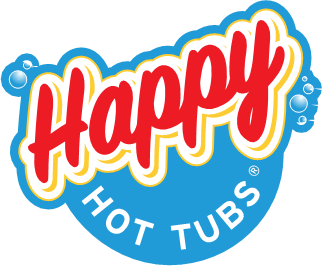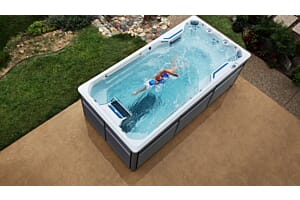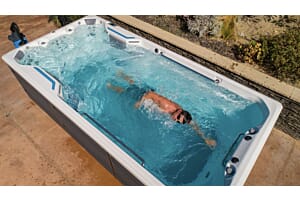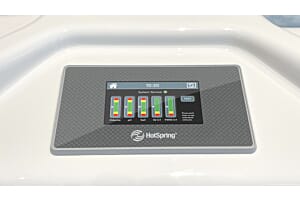Hot Tub Jets 101


A hot tub provides hydrotherapy benefits through two main features - hot water and massage jets. While the benefits of hot tubs stretch much further than just hydrotherapy, it does remain a key reason to own a spa. In this guide, we will look at everything related to hot tub jets, from how they work, different types of jet, quantity of jets, troubleshooting jets and FAQ's.
How Do Hot Tub Jets Work?
A hot tub jet is powered predominantly by the pump pushing water through the plumbing lines and out of the jet. Water is taken in through the filter or suctions then pumped through the heater and back out, this flow is what keeps a hot tub filtered and hot! Some jets also have the added feature of air input into the line, which increases power and also has a very slight cooling effect. This is called 'venturi'. A small hole for air intake is opened or closed using an air controller, which adds or removes air into the hot tub jet. Alongside this, most hot tubs have diverters to divert power from one side of the hot tub to the other. These diverters offer great control to the hot tub user.
A hot tub jet in simple terms is a nozzle that is locked into the jet body (holder). There are many different types of jet from ultimate moving jets like the Hot Spring Moto Massage to rotary jets and more standard directional jets. We will cover these three main jet types below.
Moving Jets

Using the power of the water and air through the plumbing lines, some jets are able to provide ultimate moving massage. The patented Moto-Massage® DX Jet from Hot Spring is the leading moving jet on the hot tub market. This jet provides two powerful streams of water that move up and down your back. The feeling of this jet is very unique and is one of the key reasons hot tubbers choose the Hot Spring Highlife Collection of hot tubs.
Rotary Jets
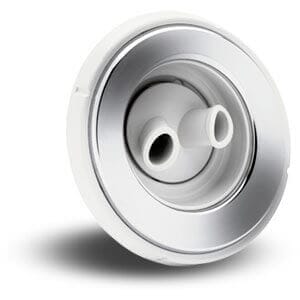 These jets offer a more targeted massage than a full moving jet. Using the power of water and air, they move or turn to provide a consistent stream of water. The jet featured as an example here is the Rotary Hydromassage Jet from Hot Spring, this jet spins to provide excellent massage. These jets are quite common in most hot tubs.
These jets offer a more targeted massage than a full moving jet. Using the power of water and air, they move or turn to provide a consistent stream of water. The jet featured as an example here is the Rotary Hydromassage Jet from Hot Spring, this jet spins to provide excellent massage. These jets are quite common in most hot tubs.
Directional Jets

This is probably the most common jet to feature on hot tubs. These jets can be moved to one position then provide a constant flow. Some of these jets have a wide movement whilst others can only be adjusted slightly. The jet featured here is a large Directional Hydromassage Jet from Hot Spring and is perfect for targeted hydrotherapy.
How Many Jets Does a Hot Tub Need?
This is a very common question for hot tub buyers. When shopping for hot tubs you will notice a hot tub with 100 jets and a hot tub the same size with around 20-40 jets. Each hot tub manufacturer approaches jet style and quantity differently. Some will focus on adding a high number of jets to wow the buyer and others will focus on innovation and targeted massage. As a retailer of Hot Spring Spas, we believe in quality over quantity and will outline why below.
- Pump to Jet Ratio. This should always be considered when purchasing a hot tub. If your hot tub has 100 jets but just 1 or 2 pumps then the power through each jet will be spread very thin and will not provide a good targeted massage. On the flip side, a lower number of top quality jets will provide a better, more targeted massage to the hot tubbers.
- Power Requirement / Running Costs / Noise. Asuming the 100 jet hot tub actually has 4 or 5 jet pumps then you must consider how much this will impact running costs and the hot tub experience. Running 3 or 4 pumps will add to running costs and add noise when the hot tub is in use, which will make hot tubbing a more negative experience. With more focused massage, you can improve your overall hot tub experience and ensure that you can fully enjoy the quality time a hot tub provides.
- Leak Risk & Diagnosis. The more jets added to a hot tub, the more plumbing! Any quality hot tub will be built to prevent leaks and fully tested at the factory however added pipework will add to the risk of leaks. In addition to this, diagnosing a leak in the future will be a lot more complicated with a spider web of plumbing lines running inside the hot tub. This factor shouldn't be a concern if you choose a quality hot tub and reliable hot tub dealer but worth considering if pondering over jet quantity.
- Lack of Variation. It is always worth considering how varied the jets in a hot tub are. You want to ensure you can get enough variation to provide for your hydrotherapy needs. The three types given as an example above give a good idea of different types available. If a hot tub manufacturer is focusing on jet quantity, it is worth considering the type of jet and how varied they are. We would always recommend a 'wet test' to ensure you enjoy the massage that a hot tub provides before making a purchase.
Hot Tub Jets Not Working - Troubleshooting
If your hot tub jets are not working then it can usually be a quick fix. The things to check before calling for service support from your hot tub dealer are:
- Water Level - If your hot tub filters cannot draw enough water then it is likely that your jet power will be reduced to little or no flow. Ensure that your water level is sufficient and if not ensure you turn the hot tub off and top up the water level.
- Filter - If your hot tub filter is dirty then flow will be reduced and jet power will be impacted. Make sure your filter is kept clean, check out our handy guide on how to clean your filter for more information.
- Air Lock - If your hot tub has an air lock then water will not be able to flow through into your jets. An air lock is easily diagnosed when your pump is on and making a noise but no water is coming through, instead just the odd surge of air bubbles. To remove an airlock, turn the pump from low to high speed a few times, if this does not push through the air then turn the hot tub off and bleed the air from the pump union.
- Debris Behind a Jet - Sometimes debris can be caught behind a jet. Most jets can be removed by unlocking the jet from the jet body but check with your dealer or manufacturer before attempting to do this. Once removed you can clear the debris and put the jet back into place.
- Turn The Jet On! - Some individual jets turn on and off by turning the unit clockwise or anti-clockwise. Try turning the jet to see if this turns the flow on or check with your dealer to see if this may be the case.
